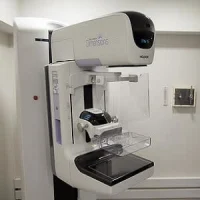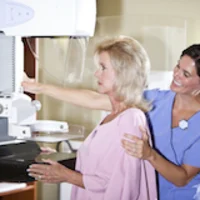New research finds that lower screening mammography recall rates – the rates at which women are called back for additional testing based on suspicious findings – correlate with higher rates of breast cancers detected between screenings (or interval cancers). Analysis of some 5 million screening episodes from 84 screening facilities in the UK showed average recall rate of 4.56 percent, with an interval cancer rate of 3.1 per 1,000 women screened. Interval cancers are associated with a worse prognosis than screen-detected cancers.
The findings, published online in the journal Radiology, highlight the importance of establishing a minimum recall rate for breast cancer screening programmes.
The UK has established a maximum recall rate target of less than 7 percent for a patient’s first screening, also known as a prevalent screen, and less than 5 percent for incident screens, or those in which previous screening results exist. However, no such consensus exists as to a minimum recall rate, below which additional cancers would be missed.
The new study, led by Elizabeth S. Burnside, MD, MPH (University of Wisconsin School of Medicine and Public Health, Madison, Wis.) and Stephen W. Duffy, BSc, MSc (Queen Mary University of London), sought to learn more about the potential trade-offs between lower recall rates and interval cancers. A total of 5,126,689 screening episodes from the UK National Health Service Breast Screening Programme were analysed. Data were drawn from a 36-month period with a three-year follow-up in women ages 50 to 70 years.
Recall rate averaged 4.56 percent, with an interval cancer rate of 3.1 per 1,000 women screened. Lower recall rates were associated with higher interval cancer rates. The researchers estimated that, in aggregate, 80 to 84 additional recalls would be required to avoid one interval cancer, a ratio that varied based on age group and prevalent screens versus incident screens.
Screening mammography outcomes based on age indicated that both cancer detection rates and interval cancer rates were lower in younger age groups as expected, based on underlying breast cancer incidence according to age.
“Recall rate had more of an impact on interval cancer in patients who are older,” Dr. Burnside said. “The lower number of recalls required per interval cancer avoided in older women and incident screens as compared to younger women and prevalent screens, respectively, demonstrates a slightly different ‘value’ in terms of the trade-off between recall rate and interval cancers.”
Additional research is needed to determine a specific minimum threshold for recall rate and assess the impact of digital mammography on the relationship between recall rate and interval cancers.
Source: Radiological Society of North America
Image Credit: Pixabay
Latest Articles
Mammography, breast cancer, interval cancers, Recall Rate
New research finds that lower screening mammography recall rates – the rates at which women are called back for additional testing based on suspicious findings – correlate with higher rates of breast cancers detected between screenings (or interval cancer










